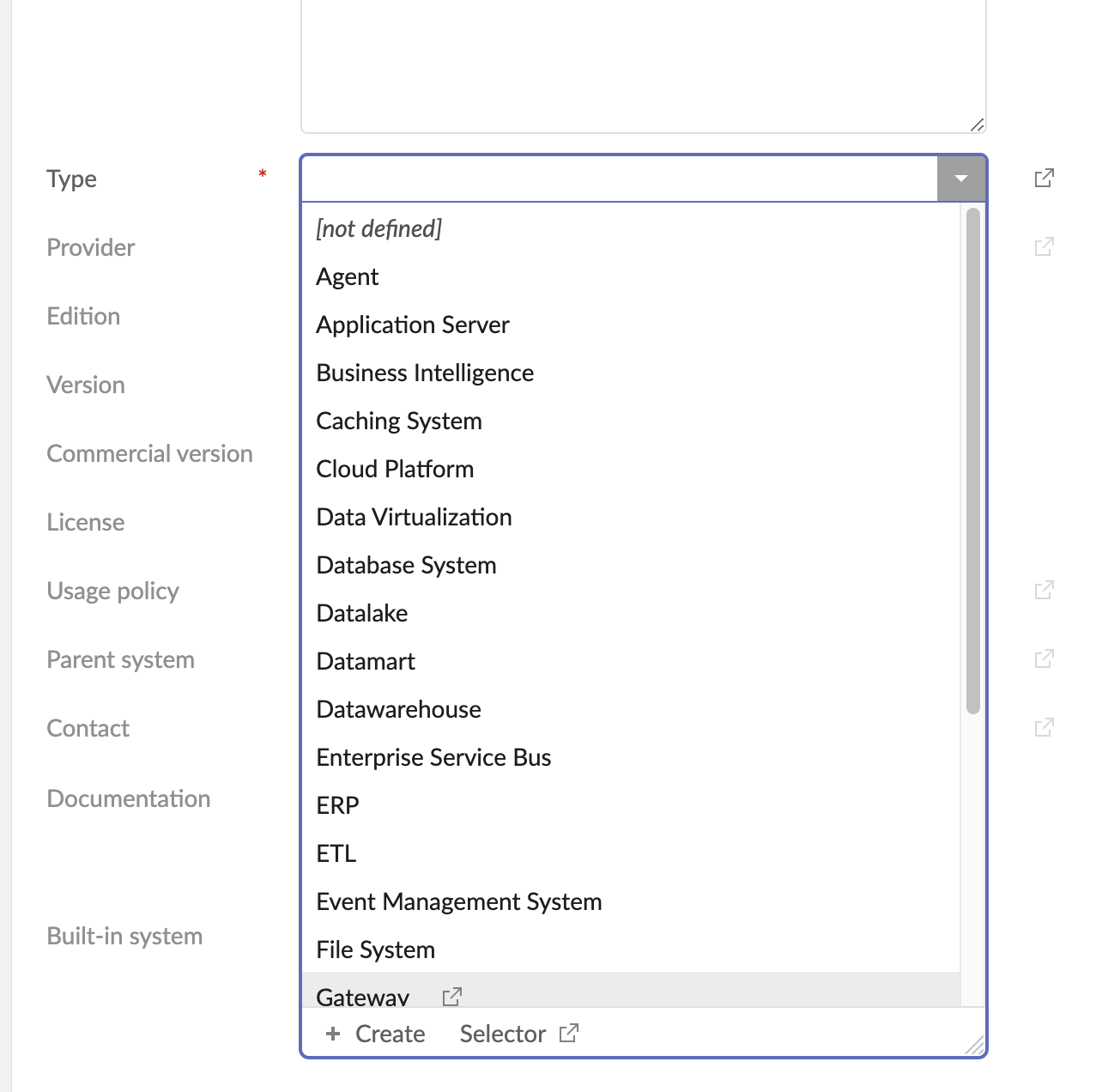Create a system type
The system types are used for many usages
- Sorting systems into families
- Defining stacks
- Defining operating systems for infrastructures
- Typing TDV infrastructure to allow provisioning
In the Technology menu of the main control panel, select ‘Systems’ to access the system screen. When creating a System, you have to define its type.
A few built-in system types are defined
- Operating System: this one is used to filter available operating systems in infrastructure definition page
- Database System
- Middleware
- Application Server
- Web Server
- Enterprise Service Bus
- Infrastructure Service
- Security Service
- Storage System
- Messaging System
- Event Management System
- Caching System
- File System
- Agent
- Datawarehouse
- Datamart
- Datalake
- ETL
- Hadoop-based Platform
- Registry/Directory
- Gateway
- Stack: this one is used to define [stacks]./manage_systems.html)
- Data Virtualization (TIBCO® Data Virtualization for instance)
- Cloud Platform
- Spreadsheet
- Master Data Management
- ERP
- Business Intelligence
- Undefined
Create a new system type
You can create other system types if built-in types are not sufficient for your usage.
On system creation/update page, on system type selection you can create a new system type

| Field | Description | Technical name |
|---|---|---|
| Identifier |
This field is mandatory. Primary key of the object, it uniquely identify the object of this kind in TIBCO Cloud™ Metadata. The identifier is automatically generated and cannot be modified. |
id |
| Label |
This field is mandatory. A word of set of word which will be used in TIBCO Cloud™ Metadata to represent the object. |
label |
| Description |
Statement or account mainly aiming to clarify or develop the label in more words, it can also bring further unstructured information about the object. |
description |
| Built-in type |
Built-in system types cannot be deleted as used in built-in functions. |
builtIn |
| Systems |
List of all systems of this type. |
systems |
When you have completed the creation of your system type, click on the ‘Save and close’ button.
